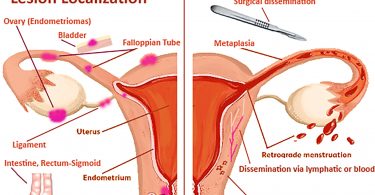The subject of dreams and their analysis has been absolutely intriguing since time immemorial. The efforts to interpret their meanings and messages date back to 5000-4000BC. Studies by archaeologists show that dreams were recorded as early as in the Greek and Roman periods, on clay tablets. Then, there was a spiritual tone linked with the dreams as people believed their dreams to be direct messages from the Gods or the dead and indicated the future.
Currently, dreams are defined as successions of images, ideas, emotions, and sensations that occur involuntarily in the mind during certain stages of sleep (mainly in the rapid-eye-movement phase or the ‘paradoxical phase’, when the brain activity shows high frequency waves and resembles that of being awake). Although the purpose and significance of dreams are not clearly understood, they still manage to arouse curiosity among scientists, philosophers, psychologists, and homoeopaths, worldwide. The scientific study of dreams is called oneirology. In modern parlance, oneirologists see dreams as messages from the subconscious mind and can range from normal and ordinary to overly bizarre, lasting for a few seconds or as long as twenty minutes. Dreams can have varying natures, such as frightening, exciting, magical, melancholic, adventurous, or sexual. The founding father of psychoanalysis, Sigmund Freud has written extensively about dreams and their interpretations. All his writings explain dreams as expressions of our deepest desires and anxieties, repressed childhood memories or obsessions, those that went beyond the conscious mind, to reside in the subconscious.
Homoeopathy being a therapy based on symptom similarity, takes into account the entire picture of the patient to be matched with that of the medicine, and the most similar one, called the ‘Similimum’ to be prescribed. This picture includes both the symptoms of the patient (the presenting complaints) and the general personality traits (physical and mental generals). Dr. Kent, a stalwart of Homoeopathy, classified these general symptoms (especially the mentals) as the most important ones in selecting the ‘similimum’ as they profoundly affect the body and reflect the deeper personality of the patient. According to Dr. Miller, “effects of sleep and dreams can be taken as general symptoms”, provided the dream is occurring repeatedly and the remedy matches with other striking symptoms of the patient. Dr. Hahnemann himself gave importance to dreams, which is evident from the recordings of the proving conducted by him. Dreams have been included in our Materia medicas as well as the repertories ranging from ‘Boenninghaussen’s Therapeutic Pocket Book’ which contains an entire chapter dedicated to sleep and dreams to the ‘Repertory of Homoeopathic Materia Medica’ by Dr. Kent which also encompasses the same, as part of the chapter on ‘Sleep’.
Major remedies that can be identified and are frequently indicated by the character of dreams are -
● Aconite for anxious dreams,
● Rhus tox for dreams of rowing on water,
● Kreosote and Senega for dreams of urinating,
● Natrum mur for dreams of robbers and robbery,
● Sepia for dreams of being raped or threats of rape etc.
The most widely used, Kent’s Repertory shows an extensive work on ‘Dreams’. Many rubrics in this chapter have only one remedy mentioned against them. These include:
● ‘dreams of pins’- Mercurius,
● ‘dreams of nakedness’- Rumex,
● ‘dreams of being pregnant’- Picric acid,
● ‘dreams of soldiers’- Mag sulph,
● ‘dreams of ghosts’- Silicea,
● ‘dreams of skeletons’- Opium,
● ‘dreams of suicide’- Naja,
● ‘dreams of tombs’- Anacardium,
● ‘dreams of being wounded’- Antim crudum,
● ‘dreams of explosion’- Stannum,
● ‘dreams of haemorrhage’- Phosphorus,
● ‘dreams of dragons’- Opium.
● ‘dreams of beasts’- Pulsatilla
● ‘dreams that he was blind’- Physostigma
● ‘dreams of body embalmed’- Carbolic acid
● ‘dreams of body disfigured’- Sepia
● ‘dreams of limbs broken’- Cimicifuga
● ‘dreams of body swollen’- Squilla
● ‘dreams of body covered with rashes’- Ammonium mur
● ‘dreams of knees swollen’- Cocculus
● ‘dreams as if he was calling out for help’- Kali carb
● ‘comical dreams’- Glonoine & Sulphur
● ‘dreams of being in a cellar and the walls falling in’- Bovista
● ‘dreams of battles’- Allium cepa
● ‘dreams after mortification’- Pulsatilla
● ‘former dream continues on going to sleep’- Arsenic, Caladium, Natrum carb
● ‘dreams of being cut with a knife’- Guaj
● ‘dreams of seeing a person being cut up’- Mercurius
● ‘dreams that he would be crushed’- Sulphur
● ‘dreams when sleeping on the left side’- Thuja
● ‘dreams about dirty linen’- Kreosote
● ‘dreams of his own death and orders rapid removal of the corpse from the house’- Fluoric acid
● ‘dreams of disaster’- Sarsaparilla
● ‘dreams of being encircled tightly’- Ruta
● ‘dreams of being pursued by ghosts’- Silicea
● ‘dreams that he is a girl’- Apis
● ‘dreams of seeing persons hung’- Merc sulph
● ‘dreams of water being poured upon him’- Oxalic acid
● ‘dreams of vomiting of worms’- Chin.
It is absolutely natural for these remedies to have their corresponding dreams and we can correlate the nature of the remedy with that of the dream it has. Illustrations include Natrum mur which has persistent fear of robbery when awake. She will not sleep until a search for the same is made. Thus, the dream of robbers in the house. Lachesis has amorous dreams. The proving shows strong sexual urge but lack of physical power. Natrum carb has increased sexual desire, thus a first-grade remedy under the rubric of ‘amorous dreams’ in Kent’s Repertory.
A similar case I came across, was that of an aortic aneurysm with terrible pains. The patient did not show up with any striking symptom except that he dreamt of pools and seas of blood. The physician prescribed Solanum tuberosum aegrotans, which removed the dream and completely relieved the pains.
So deep is the connection between our subconscious mental state and the dreams we have. It is thus, that dreams form an indispensable part of homoeopathic case taking and at times prescribing too!
By:
Dr. Rashi Prakash
( SME, The Homeopathic Academy, BJain Publications)






